
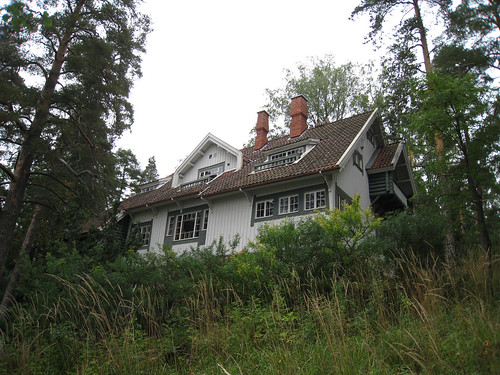 A short drive from Helsinki is Ainola, the home where Jean Sibelius lived for much of his life with his wife and daughters. It's named after his wife, Aino, and means, "Place of Aino" or "Where Aino is."
A short drive from Helsinki is Ainola, the home where Jean Sibelius lived for much of his life with his wife and daughters. It's named after his wife, Aino, and means, "Place of Aino" or "Where Aino is."He built the house in this location on purpose so he'd be away from the city but still close enough for business. It was near Aino's brother's place (an artist), and back then the house had a view of a lake.
The woods have grown taller, so you can't see the lake from the windows anymore. And in typical Finnish fashion, you can hardly see it from the highway running parallel to it. Even though the lake's only a few yards away, the trees are so thick that for a good chunk of the drive, you can't see the water at all.
I'd visited Ainola before (whether during the mission or in 1980 when the family visited for the summer, I'm not sure), and I remembered parts of the home and area. But I was surprised at how much I didn't remember.
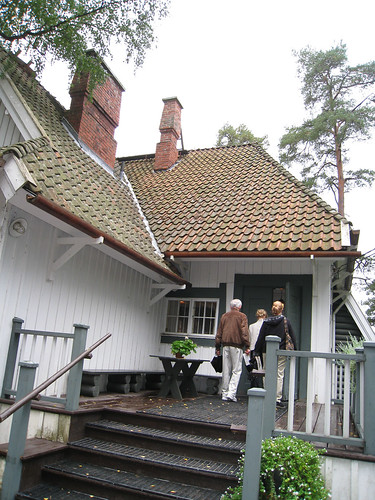
We weren't allowed to take pictures inside, which is a pity, what with all the neat things in there.
The one thing that jumped out of my memory the moment I laid eyes on it was a painting over one door. It was just as I'd remembered it. The story connected with it is probably what made it stick with me.
Sibelius had synesthesia, and in his case it meant that sounds had colors. This particular painting has a lot of bright yellow in contrast to a dark background with blacks and reds. He named the painting after the sound he heard in connection with the yellow: D major.
Why I didn't remember the bright green fireplace a few feet away from the painting that he said sounded like F major, I'll never know.
Sibelius had six different ash trays for cigars, and Aino could always tell what mood he was in depending on which one he used. We thought it'd be a great idea for me to have six different chocolate dishes on my desk so Rob might have a fighting chance at knowing what mood I'm in each day!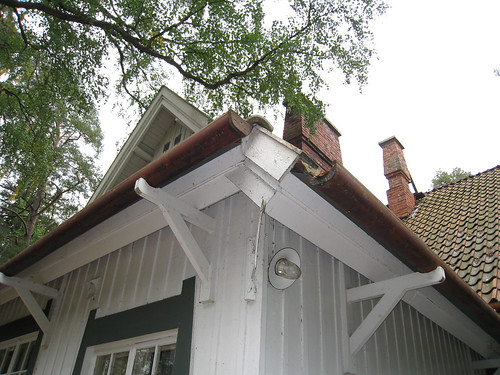
Sibelius insisted that his rain gutters be made of wood instead of metal because wood sounded more pleasant when rain hit them.
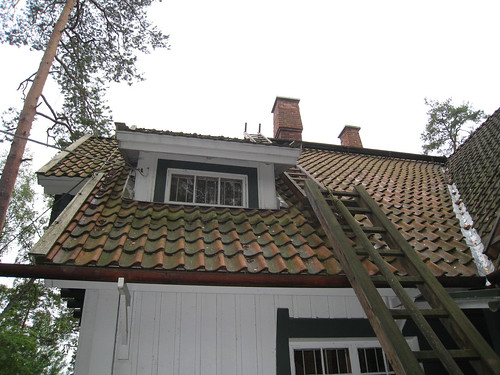 The tour guide said that Sibelius required silence to work, and his daughters weren't allowed to make noise or (especially) play the piano while he composed.
The tour guide said that Sibelius required silence to work, and his daughters weren't allowed to make noise or (especially) play the piano while he composed.
I've heard the same thing about other artists, writers, and painters who are or were fathers. And I couldn't help but think how differently mothers who try to produce art have to manage things. (If I needed absolute silence to write, I'd rarely get a darn thing done.)
One nice thing was how much the tour guide emphasized Aino's role in Sibelius's life, how her support enabled him to produce his work, and how without her, he probably wouldn't have gone far.
Apparently in his old age, he became heavily self-critical and published little. He even burned some pieces he'd worked on for years and years. There's one big piece at least that is still unpublished, because he didn't think it was ready for the public, so people are respecting that.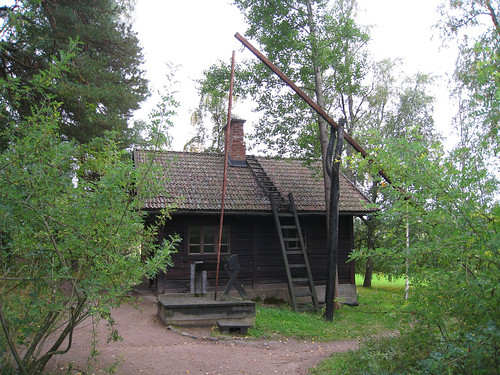 Above is the exterior of the Sibelius family sauna (a fixture of any Finnish home), along with one of several wells on the property. A sauna needs its water!
Above is the exterior of the Sibelius family sauna (a fixture of any Finnish home), along with one of several wells on the property. A sauna needs its water!
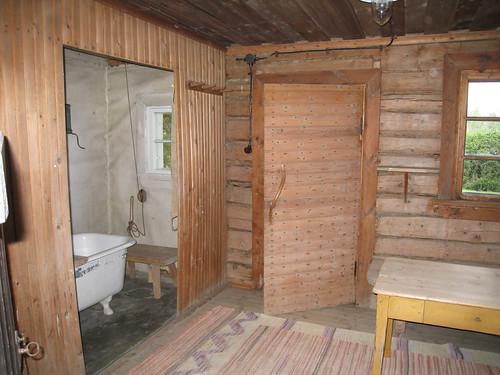 Inside the sauna house, with the bathing and changing rooms.
Inside the sauna house, with the bathing and changing rooms.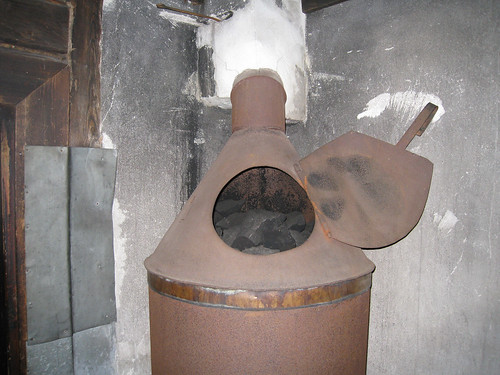 The stove in the sauna.
The stove in the sauna. Old buckets, stools, etc. from the sauna house.
Old buckets, stools, etc. from the sauna house. An ingenious way to heat bath water: after the water gets hot in the tub, ladle it into the trough at the top, which then runs into the tub, located on the other side of the wall.
An ingenious way to heat bath water: after the water gets hot in the tub, ladle it into the trough at the top, which then runs into the tub, located on the other side of the wall.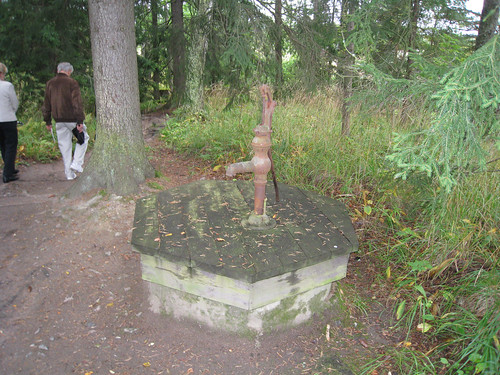 Another well. (And Mom and Dad.)
Another well. (And Mom and Dad.)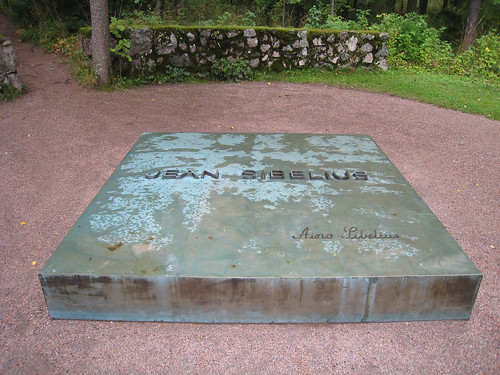 The graves of Jean and Aino Sibelius, located on the sunniest part of the property, in front of Aino's apple tree.
The graves of Jean and Aino Sibelius, located on the sunniest part of the property, in front of Aino's apple tree.



1 comment:
Beautiful photos and a wonderful description of the composer and his home.
Post a Comment